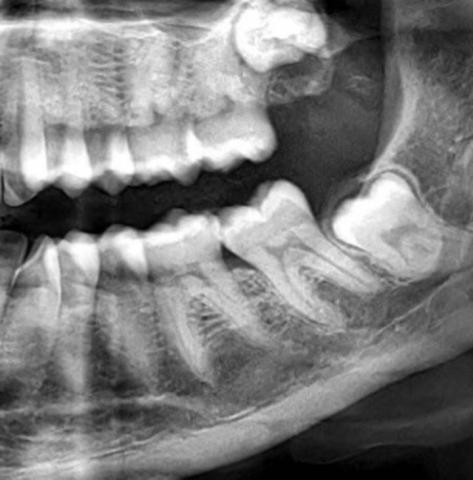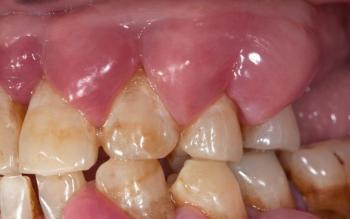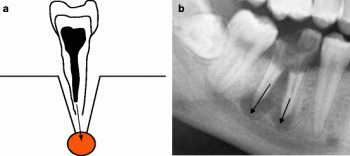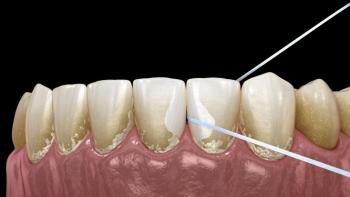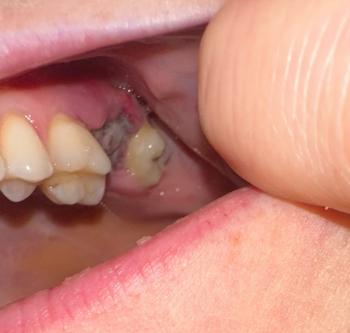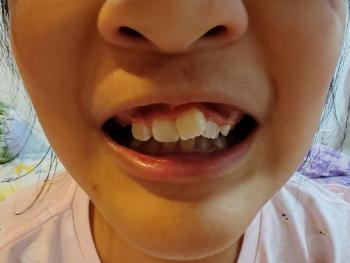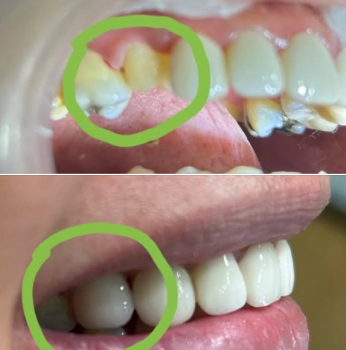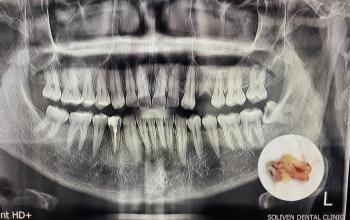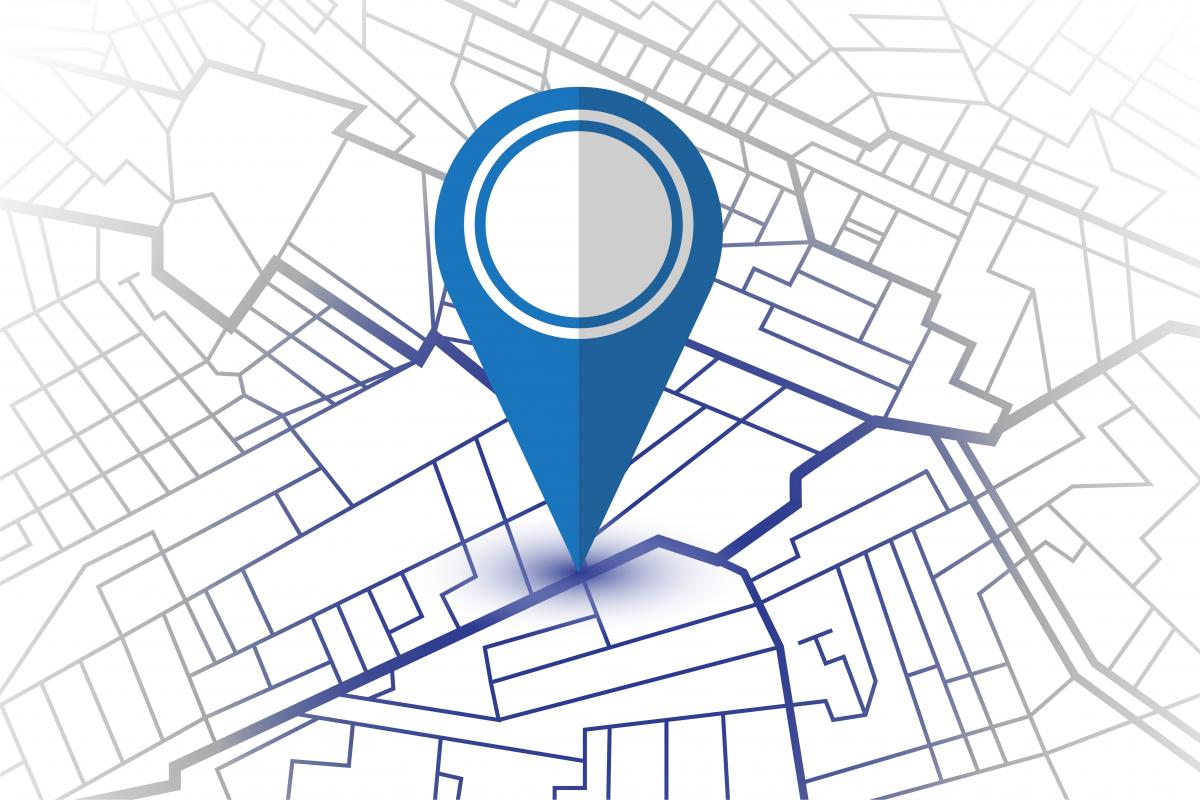Transforming Smiles, Restoring Confidence.
Impacted Wisdom Tooth: Causes, Jaw Lock Symptoms, Healing Timeline, and Safe Salt Water Rinse Routine
Severity:
Teeth Problems:
Quick radiographic findings (what I see)
-
Impacted mandibular third molar(s) (wisdom tooth/teeth) with a mesio-horizontal / mesioangular impaction — the crown is tipped toward the second molar and is at least partially covered by bone/soft tissue.
-
The impacted crown is in close proximity to the distal surface/roots of the adjacent second molar → this raises risk of decay/resorption of the second molar and increased surgical difficulty.
-
The roots of the impacted tooth appear to be close to the mandibular canal (inferior alveolar nerve) on the panoramic film — panoramic images can underestimate proximity; a CBCT (cone beam CT) is recommended to assess true nerve relationship.
-
No obvious large cyst or gross bone destruction visible on this single panoramic image, but panoramic films are limited for fine detail.
Most likely clinical problems from this x-ray
-
Recurrent pericoronitis (infection around the partially erupted tooth)
-
Caries on the impacted tooth or on the distal of the second molar due to food trapping
-
Periodontal bone loss distal to second molar
-
Increased difficulty with extraction and higher risk of temporary/permanent inferior alveolar nerve (IAN) disturbance if roots are very close to the canal
Does this make your jaw “locked”?
-
The radiograph suggests an impacted wisdom tooth that can cause trismus (reduced ability to open) if there is significant infection, inflammation, or muscle spasm.
-
“Locked jaw” (true lockjaw / tetanus is rare) — more commonly after impacted wisdom problems patients experience trismus: pain and reduced mouth opening.
-
If you are currently unable to open your mouth at all, or with severe pain, or if you have fever/swelling, seek urgent dental care.
Salt (saline) rinses — is it OK to do long term?
-
Short term (post-op / during healing): warm saline rinses (1/2–1 tsp salt in 250 mL warm water) 3× daily are excellent and recommended once you can rinse (typically after 24 hours post-extraction). Good for 7–14 days to promote healing and reduce bacteria.
-
Long term (weeks to months): occasional saline rinses are safe and non-harmful, but doing them every day for many months is usually unnecessary. If you have chronic irritation or a persistent open wound, daily saline is reasonable while you see a dentist.
-
Caveat: saline will not treat an ongoing infection that requires antibiotics or surgery. If symptoms persist despite rinses, get definitive treatment.
Recommended next diagnostic step
-
CBCT (cone-beam CT) of the area to precisely evaluate the relation of the tooth roots to the inferior alveolar nerve and the exact angulation — this changes the surgical plan and consent regarding nerve risk.
Typical extraction workflow (what to expect)
-
Pre-op visit: medical history, consent, pano + possibly CBCT, discuss anesthesia options (local ± sedation or general).
-
Pre-op instructions: fasting if sedation/GA, stop/adjust anticoagulants only as directed by physician/dentist.
-
Day of surgery: local anesthesia ± IV sedation / GA. For deeply impacted teeth the surgeon will raise a flap, remove bone around tooth, section the tooth if necessary, remove roots, irrigate, suture.
-
Immediate post-op: pressure control, pain control, cold packs first 24–48 hrs, then warm compresses; soft diet; avoid smoking/straws; follow meds (analgesics ± antibiotics if indicated).
-
Follow-up: 3–7 days to check healing and remove sutures if non-resorbable; re-evaluate at 2 weeks and later if needed.
Typical healing timeline (if uncomplicated)
-
0–48 hours: peak pain and swelling; bleeding should be controlled.
-
3–5 days: swelling and pain typically start to subside. Continue soft diet.
-
7–10 days: sutures may be removed (if applicable). Significant reduction of pain and swelling.
-
10–14 days: soft tissue mostly healed; you should be improving daily.
-
4–6 weeks: soft tissue and comfort usually good, though bone remodeling continues.
-
6–12 months: bone remodeling and complete radiographic healing.
If at 14 days you still have severe pain, swelling, pus, persistent heavy bleeding, or numbness — return to your surgeon/dentist immediately.
Possible complications (what could scale up if untreated / or after extraction)
-
If extraction delayed/left untreated: recurrent infection (pericoronitis), spread of infection to deep spaces (submandibular, parapharyngeal) → can be serious, difficulty swallowing or breathing. Progressive decay of adjacent tooth or periodontal destruction. Cyst formation around impacted tooth (dentigerous cyst).
-
After extraction risks: dry socket (alveolar osteitis) — severe pain around day 3–5, requires treatment; infection — needs antibiotics & drainage; inferior alveolar nerve injury — numbness/tingling of lower lip/chin (usually temporary, rarely permanent); lingual nerve involvement (taste/sensation) possible; bleeding; trismus; very rarely jaw fracture or osteomyelitis in compromised patients.
-
Early recognition is key — persistent or worsening symptoms should be seen urgently.
Immediate advice / steps you can take now
-
If you have significant opening limitation, fever, progressive swelling, increasing pain, pus, difficulty breathing or swallowing → seek emergency dental care now.
-
Continue gentle warm saline rinses (3× daily) — fine for now. If extraction is planned, follow your surgeon’s instructions (they may ask you to stop rinsing before/after surgery or use for a limited time).
-
Maintain excellent oral hygiene around the area but avoid aggressive probing of the inflamed tissue.
-
Avoid smoking and alcohol (they impair healing).
-
Arrange CBCT evaluation if your surgeon recommends it.
-
Book extraction with an oral surgeon if you decide on removal; discuss anesthesia type and nerve-risk based on CBCT.
What to tell your dentist/surgeon (sample points to bring up)
-
Show this x-ray and ask if they recommend CBCT and why.
-
Ask about IAN proximity and the chance of temporary vs permanent numbness (percent based on their assessment).
-
Ask whether to expect a simple or surgical extraction, anesthesia options, antibiotic plan, and estimated recovery timeline.
-
If cost or time is a concern, ask about staged care (treat infection first, then extraction).
Visit nearest clinic / directory
-
You included your clinic directory link — bring the x-ray file and your symptoms history (duration, fever, swelling, mouth opening, prior infections) when you visit. If you want, I can help you write a short message to send to the clinic describing symptoms and requesting an appointment.
If you want, I can:
-
Draft a clear message you can send to the clinic/dentist including the key concerns (jaw locking/trismus, duration, rinses).
-
Create a short checklist of questions to ask your surgeon before extraction.
-
Explain post-op care day-by-day in printable format.
Tell me which of those you want and I’ll prepare it right away.

